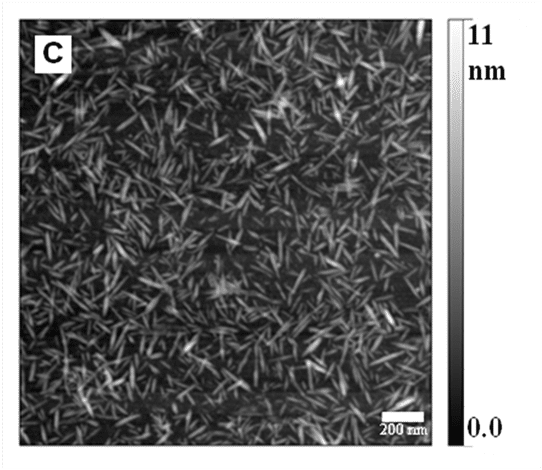Nanocrystalline cellulose particles (NCC) (also known as cellulose nanocrystals (CNC)) are small rod-shaped particles with a length of 100-200 nm and a width of about 5 nm. They are typically made from cellulose fibers by hydrolysis with H2SO4, which breaks down the amorphous cellulose chains into sugars, leaving the nanocrystals which, in suspension, form cholesteric liquid crystals. They have a number of potential applications in color films, reinforcement agents in composites, templates for chiral glasses and many more. The conventional NCC is stabilized by sulphonate groups, introduced during the hydrolysis. It is also possible to liberate the NCC particles by chemical reactions. We have made NCC with protruding DAC (dialdehyde cellulose) or DCC (dicarboxylated cellulose) chains, providing the particles with steric and electrosteric stability respectively. An AFM micrograph of DCC stabilized NCC is shown in the figure. These particles are much more stable than conventional NCC and form much stronger films. Properties of these functionalized nanocrystalline cellulose particles will be discussed.

Fig. 1AFM of nanocrystalline cellulose particles stabilized with dicarboxylated cellulose chains